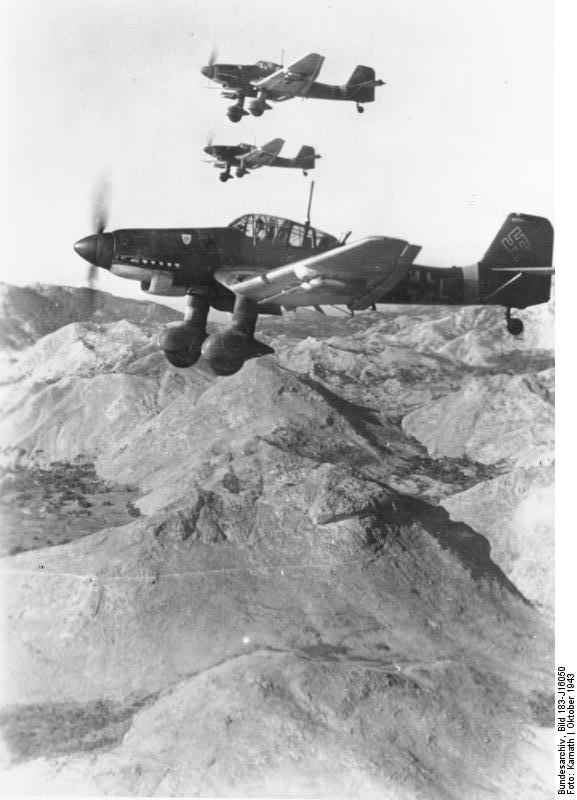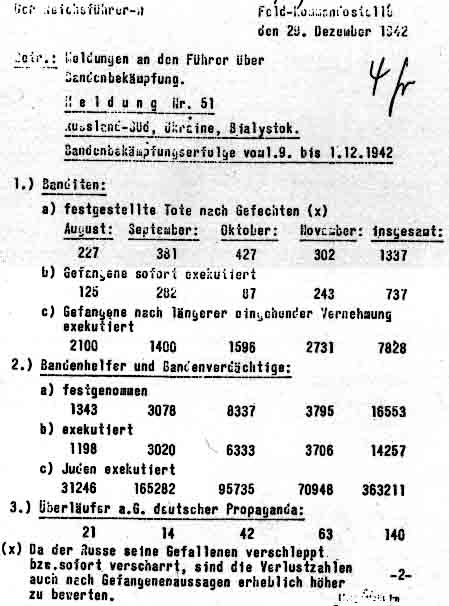|
Georgios Petrakis
Georgios Petrakis ( el, Γεώργιος Πετράκης; 1890 – 1972), better known as Petrakogiorgis (also transliterated as Petrakoyiorgis, Petrakoyeorgis, el, Πετρακογιώργης), was a Greek businessman, partisan, and politician. He was a leading figure in the Cretan resistance of the years 1941 – 1944 against the Axis occupation forces, well respected for his patriotism, courage, honesty, perspicacity and selflessness. Before World War II Petrakogiorgis was born in the village of Magarikari, Mesara Plain, Crete, which was then part of the Ottoman Empire. His parents were Emmanuel Petrakis and Antiope Papastefanaki. Petrakogiorgis fought as an officer in the Asia Minor Campaign, after the end of which he worked as a merchant of agricultural products and owned an olive oil mill and a soap factory. Resistance service Aged around 50 when the war broke out, Petrakogiorgis was too old to be called up. Nevertheless, he was one of the regional leaders recrui ... [...More Info...] [...Related Items...] OR: [Wikipedia] [Google] [Baidu] |
Georgios Petrakis (Petrakogiorgis) In 1944
Georgios Petrakis ( el, Γεώργιος Πετράκης; 1890 – 1972), better known as Petrakogiorgis (also transliterated as Petrakoyiorgis, Petrakoyeorgis, el, Πετρακογιώργης), was a Greek businessman, partisan, and politician. He was a leading figure in the Cretan resistance of the years 1941 – 1944 against the Axis occupation forces, well respected for his patriotism, courage, honesty, perspicacity and selflessness. Before World War II Petrakogiorgis was born in the village of Magarikari, Mesara Plain, Crete, which was then part of the Ottoman Empire. His parents were Emmanuel Petrakis and Antiope Papastefanaki. Petrakogiorgis fought as an officer in the Asia Minor Campaign, after the end of which he worked as a merchant of agricultural products and owned an olive oil mill and a soap factory. Resistance service Aged around 50 when the war broke out, Petrakogiorgis was too old to be called up. Nevertheless, he was one of the regional leaders recruite ... [...More Info...] [...Related Items...] OR: [Wikipedia] [Google] [Baidu] |
Special Operations Executive
The Special Operations Executive (SOE) was a secret British World War II organisation. It was officially formed on 22 July 1940 under Minister of Economic Warfare Hugh Dalton, from the amalgamation of three existing secret organisations. Its purpose was to conduct espionage, sabotage and reconnaissance in occupied Europe (and later, also in occupied Southeast Asia) against the Axis powers, and to aid local resistance movements. Few people were aware of SOE's existence. Those who were part of it or liaised with it were sometimes referred to as the "Baker Street Irregulars", after the location of its London headquarters. It was also known as "Churchill's Secret Army" or the "Ministry of Ungentlemanly Warfare". Its various branches, and sometimes the organisation as a whole, were concealed for security purposes behind names such as the "Joint Technical Board" or the "Inter-Service Research Bureau", or fictitious branches of the Air Ministry, Admiralty or War Office. SOE operated ... [...More Info...] [...Related Items...] OR: [Wikipedia] [Google] [Baidu] |
Sofoklis Venizelos
Sofoklis Venizelos (, also transliterated as Sophocles Venizelos) (3 November 1894 – 7 February 1964) was a Greek politician, who three times served as Prime Minister of Greece – in 1944 (in exile), 1950 and 1950–1951. Life and career Venizelos was born on 3 November 1894 in Chania, in Crete (then a part of the Ottoman Empire; became an autonomous state under Ottoman suzerainty and the protection of Russia, Britain, France and Italy in 1898). He was the second-born son of the politician Eleftherios Venizelos. During World War I he served with distinction in the Greek Army and in the initial phases of the Asia Minor campaign, reaching the rank of Captain of Infantry. He resigned from the Army and was elected as an MP with his father's Liberal Party in the 1920 elections. In 1941, after the Axis occupation of Greece, he became ambassador to the United States, representing the Greek government in exile based in Cairo. He became a minister of that government in 1943 und ... [...More Info...] [...Related Items...] OR: [Wikipedia] [Google] [Baidu] |
Liberal Party (Greece)
The Liberal Party ( , literally "Party of Liberals") was a major political party in Greece during the early-to-mid 20th century. It was founded in August 1910 by Eleftherios Venizelos and went on to dominate Greek politics for a considerable number of years until its decline following the Second World War. Among its most well-known members, apart from Venizelos, were Alexandros Papanastasiou, Nikolaos Plastiras, Georgios Papandreou and Konstantinos Mitsotakis. Since its founding, the party's emblem had been the anchor, Venizelos had brought with him from Crete. History Founded as the ''Xipoliton'' ("barefoot") party in Crete (then an autonomous region of the Ottoman Empire), its early leaders were Kostis Mitsotakis (grandfather of Konstantinos Mitsotakis) and Eleftherios Venizelos. After the annexation of Crete by Greece, Venizelos moved to Athens and turned the party into a national one, under the ''Fileleftheron'' (liberal) name in 1910. For the following 25 years, the f ... [...More Info...] [...Related Items...] OR: [Wikipedia] [Google] [Baidu] |
Greek Parliament
The Hellenic Parliament ( el, Ελληνικό Κοινοβούλιο, Elliniko Kinovoulio; formally titled el, Βουλή των Ελλήνων, Voulí ton Ellínon, Boule of the Hellenes, label=none), also known as the Parliament of the Hellenes, the Hellenic Bouleterion or Greek Parliament, is the unicameral legislature of Greece, located in the Old Royal Palace, overlooking Syntagma Square in Athens. The parliament is the supreme democratic institution that represents the citizens through an elected body of Members of Parliament (MPs). It is a unicameral legislature of 300 members, elected for a four-year term. In 1844–1863 and 1927–1935, the parliament was bicameral with an upper house (the senate) and a lower house (the chamber of deputies), which retained the name . Several important Greek statesmen have served as the speaker of the Hellenic Parliament. History Constitutional monarchy, 1843–1862 The first national parliament of the independent Greek state was ... [...More Info...] [...Related Items...] OR: [Wikipedia] [Google] [Baidu] |
Heraklion
Heraklion or Iraklion ( ; el, Ηράκλειο, , ) is the largest city and the administrative capital of the island of Crete and capital of Heraklion regional unit. It is the fourth largest city in Greece with a population of 211,370 (Urban Area) according to the 2011 census. The population of the municipality was 177,064. The Bronze Age palace of Knossos, also known as the Palace of Minos, is located 5.5 km (3.1m) southeast of the city. Heraklion was Europe's fastest growing tourism destination for 2017, according to Euromonitor, with an 11.2% growth in international arrivals. According to the ranking, Heraklion was ranked as the 20th most visited region in Europe, as the 66th area on the planet and as the 2nd in Greece for the year 2017, with 3.2 million visitors and the 19th in Europe for 2018, with 3.4 million visitors. Etymology The Arab traders from al-Andalus (Iberia) who founded the Emirate of Crete moved the island's capital from Gortyna to a new castle they called ... [...More Info...] [...Related Items...] OR: [Wikipedia] [Google] [Baidu] |
Razing Of Vorizia
The Razing of Vorizia ( el, Καταστροφή των Βοριζίων) refers to the destruction of the village of Vorizia () in Crete (Greece) by aerial bombardment and the murder of five of its inhabitants on 27 August 1943 by Axis occupation of Greece, German occupying forces during World War II.Beevor, Antony. ''Crete: The Battle and the Resistance'', John Murray Ltd, 2005, pp.145. Καζαντζάκης, Ν., Καλιτσουνάκης, Ι. και Κακριδής, Ι.Θ. ''Έκθεσις της Κεντρικής Επιτροπής Διαπιστώσεως Ωμοτήτων εν Κρήτη''. Σύνταξις 29/6 - 6/8/1945. Έκδοση Δήμου Ηρακλείου, 1983excerpt Background The village of Vorizia (or ''Voriza'') is built on the south slopes of Mount Ida (Crete), Mt Ida, located approximately south of Heraklion. Its residents are primarily occupied with olive tree cultivation and pastoral farming. During the German occupation of Crete, residents of Vori ... [...More Info...] [...Related Items...] OR: [Wikipedia] [Google] [Baidu] |
Bandenbekämpfung
In German military history, ''Bandenbekämpfung'' (German; ), also Nazi security warfare (during World War II), refers to the concept and military doctrine of countering resistance or insurrection in the rear area during wartime through extreme brutality. The doctrine provided a rationale for disregarding the established laws of war and for targeting of any number of groups, from armed guerrillas to the civilian population, as "bandits" or "members of gangs". As applied by the German Empire and later by Nazi Germany, it became instrumental in the mass crimes against humanity committed by the two regimes, including the Herero and Namaqua genocide and the Holocaust. Emergence Concept and origins According to historian and television documentary producer, Christopher Hale, there are indications that the term ''Bandenbekämpfung'' may go back as far as the Thirty Years' War. Under the German Empire established by Bismarck in 1871 after the Franco-Prussian War—formed as a ... [...More Info...] [...Related Items...] OR: [Wikipedia] [Google] [Baidu] |
Kidnapping Of Heinrich Kreipe
The kidnapping of Heinrich Kreipe was an operation executed jointly by the British Special Operations Executive (SOE) and local resistance members in Crete in German-occupied Greece during the Second World War. The operation was launched on 4 February 1944, when SOE officer Patrick Leigh Fermor landed in Crete with the intention of abducting notorious war criminal and commander of 22nd Air Landing Division, Friedrich-Wilhelm Müller. By the time of the arrival of the rest of the abduction team, led by William Stanley Moss, two months later, Müller had been succeeded by Heinrich Kreipe, who was chosen as the new target. On the night of 26 April, Kreipe's car was ambushed while en route from his residence to his divisional headquarters. Kreipe was tied and forced into the back seat while Leigh Fermor and Moss impersonated him and his driver respectively. Kreipe's notorious impatience at roadblocks enabled the car to pass numerous checkpoints before being abandoned at the haml ... [...More Info...] [...Related Items...] OR: [Wikipedia] [Google] [Baidu] |
Battle Of Trahili
The Battle of Trahili ( el, Μάχη στο Τραχήλι) was fought on 15 August 1943 between Cretan partisans and German occupying forces during World War II. It took place near the village of Vorizia in south-central Crete, when German forces attempted to surround a small group of partisans led by the local chieftain Petrakogiorgis. Most of the partisans managed to escape, despite being heavily outnumbered.Η μάχη στο Τραχήλι στις 15 Αυγούστου 1943, Πατρίς onLine, 24 Αυγούστου 2012 archivedBeevor, Antony. ''Crete: The Battle and the Resistance'', John Murray Ltd, 2005, pp.145. Background In June 1941, soon after the[...More Info...] [...Related Items...] OR: [Wikipedia] [Google] [Baidu] |
Amari Valley
The Amari Valley is a fertile valley on the foothills of Mount Ida and Mount Kedros in Crete. The valley was known as a center of resistance to the Germans during the Battle of Crete and the German occupation. After the abduction of General Heinrich Kreipe the Germans destroyed a number of villages in the area, killing many of their inhabitants. Prehistory The ancient city of Phaistos expanded with satellite development into the Amari Valley in the late Bronze Age, establishing a settlement at Monastiraki.C. Michael Hogan. 2007 See also *Phaistos *Holocaust of Kedros The Holocaust of Kedros ( el, Ολοκαύτωμα του Κέντρους/Κέδρους), also known as the Holocaust of Amari ( el, Ολοκαύτωμα του Αμαρίου), was the mass murder of the civilian residents of nine villages lo ... References * C. Michael Hogan. 2007C.Michael Hogan, ''Phaistos Fieldnotes'', The Modern Antiquarian* John D. Pendlebury. 1991. ''The Archaeology of Crete'', Biblo & Ta ... [...More Info...] [...Related Items...] OR: [Wikipedia] [Google] [Baidu] |


.jpg)


